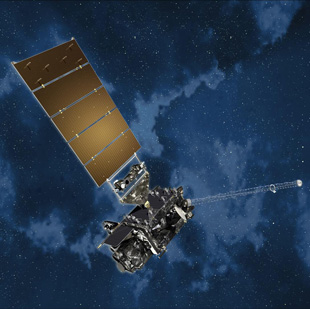by Jeff Rosenfeld, Editor in Chief, BAMS
One of the great challenges of parenthood is teaching kids how to share. All too often the stigmatizing message spreads amongst parents at your toddler’s preschool: your little Izzie isn’t “sharing” with the other kids. Sharing is a difficult skill to teach at any age.
The problem is, of course, that we’re telling our children to share the things that matter most to them—sacred items like a toy car, a teddy bear, or a cupcake. To a two-year-old, the most innocuous possessions are precious and are not negotiable. Nor are adults setting an example by sharing precious possessions: we’re not sharing our home with our coworkers or handing the keys of our car to complete strangers. We don’t invite the people at the table next to us in the restaurant to sample our dessert.
Ultimately, some things we simply never learn to share. But you wouldn’t know it from looking over the program to our upcoming AMS Annual Meeting. Clearly, in atmospheric, oceanic, and hydrologic sciences you will find people who have learned to share. It’s a key characteristic of our community that we ought to share more with the rest of the world (for more on this, seek William Hooke’s book, Living on the Real World: How Thinking and Acting Like Meteorologists Will Help Save the Planet).
People in this community have no choice about sharing, actually. It’s the subject matter, above all. Water and air on this planet must be shared. We can’t live without sharing them. We certainly can’t study them without sharing, either.
Now, actually, science in general is good at sharing. Research can’t get anywhere if ideas and information aren’t shared. The shear number of people presenting at our meeting, however, is a very high percentage of our overall membership. Sharing is integral to science, and in particular to weather, water, and climate science.
Some presentations deal head-on with improving scientific sharing. For example, on Wednesday (Jan. 25, 8:45 a.m.), Kyle Tyle of SUNY is discussing the Big Weather Web initiative of NSF. The idea is to improve data management and access and minimize the work of creating visualizations. In the process Big Weather Web addresses the problem of reproducibility that bedevils a world in which everyone is creating tools and storage on their own.
Later the same day, at 5 p.m., Cecelia Deluca (CIRES, Univ. of Colorado) will talk about how the Earth System Prediction Suite initiative helps the major U.S. modeling centers strengthen their common efforts in subseasonal to seasonal scale prediction. “ESPS and its underlying standards begin to transform the S2S modeling community from one in which multiple modeling centers strive to understand each other’s efforts, to one in which each agency can leverage resources across the nation.” A lot of this, of course, is the sharing of codes and modules.
There are countless other examples of how scientists share techniques and data. Sharing gets more difficult—and the material benefits more elusive—when we talk about sharing at a personal level. The rewards are deep, however. This type of sharing is also fundamental to science. It governs how mentors, teachers, and leaders must interact with colleagues and students.
Melissa Burt and colleagues from Colorado State University published an illuminating article in BAMS in July about how sharing is the essence of solving a central dilemma of our science—how do we attract and keep talent from underrepresented groups in our field? Offering mentorships and field research opportunities are among the keys, but the bottom line in all of those recipes for recruitment and retention is the idea of sharing. Advisors, mentors, and colleagues need to show students that they will share their experiences and opportunities at every step in a student’s education.
At the root of effective sharing is the willingness to build and keep trust. Students ultimately will trust the atmospheric sciences with their futures if they realize the atmospheric sciences will entrust them with the responsibility to carry our work forward.
The trust-building example of the Earth Science Women’s Network (also featured in BAMS) has earned them the 2017 AMS Special Award at this upcoming Annual Meeting. It is inscribed “for inspirational commitment to broadening the participation of women in the Earth sciences, providing a supportive environment for peer mentoring and professional development.”
On this Martin Luther King Day, there’s a lesson in that for all of us—a lesson in supporting diversity through building trust and sharing. Science already models its relationship of trust, and not just by sharing data and tools with each other. Science models this relationship by asking for a measure of trust from the world. The fate of many, many species is, to a large degree, in the hands of those who seek understanding of climate, weather, and water. Surely a science entrusted with the global future can learn to hand over the keys to its intellectual future to eager, talented young people of all backgrounds.
(This post is adapted from the “Letter from the Editor” in the July 2016 issue of the Bulletin of the American Meteorological Society.)
{ 0 comments }





